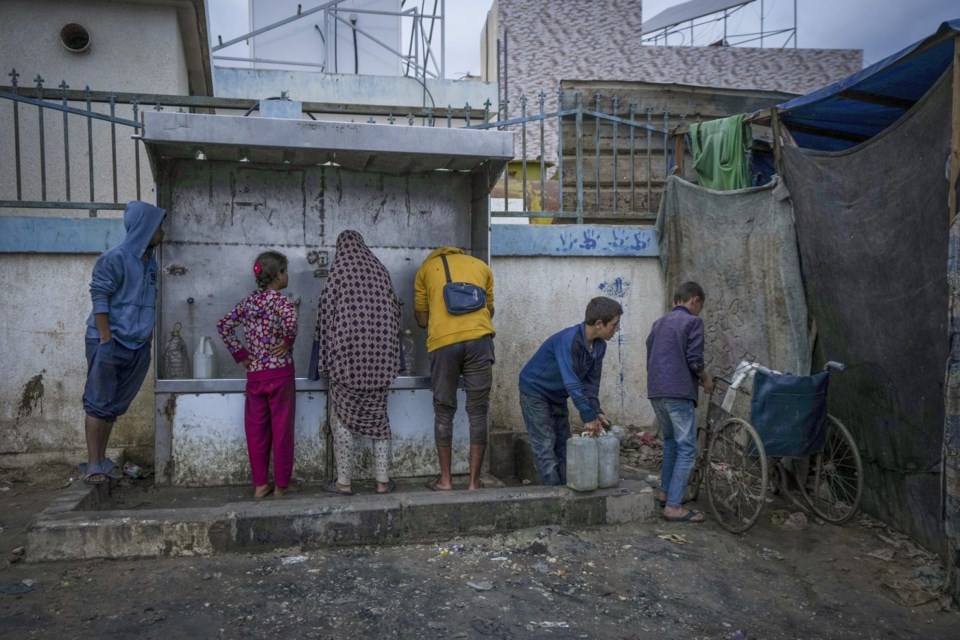UNITED NATIONS (AP) — The deputy executive director of the U.N. World Food Program has been on whirlwind visits to hotspots in the Middle East and Sudan to assess dire humanitarian situations and escalating demands for food from millions of people trapped or fleeing conflicts.
But Carl Skau said in an interview with The Associated Press this week that the Rome-based agency has been forced to make major cuts to the numbers of people it can help because of a lack of funding.
WFP is working to diversify its funding, including targeting the private sector, but Skau said, “it’s going to be a tough time ahead, no doubt, with increasing gaps.”
“Needs continue to rise, and the funding does not even remain stable at the levels we have currently,” he said.
‘A triple crisis’ in Syria
Syria is facing the fallout from a 13-year civil war, the surge in arrivals from the recent Israel-Hezbollah war in neighboring Lebanon, and rebels unexpectedly ousting longtime leader Bashar Assad, Skau said.
Even before Lebanon and the end of the Assad family’s more than 50-year rule, he said 3 million people were acutely food insecure and very hungry. But the agency was only providing food aid to 2 million because of funding cuts.
Now, Skau said, “it’s a triple crisis, and the needs are going to be massive.”
While the situation in Aleppo, Syria’s largest city, is “quite calm and orderly,” he said there is still uncertainty in the capital, Damascus, where markets are disrupted, currency values have dropped, food prices are going up and transport isn’t working.
This means a bigger humanitarian response in the short term. In the next phase, the U.N. will be focusing on Syria’s recovery and ultimately its reconstruction, Skau said.
Gaza is heading toward famine
Skau says the humanitarian situation in northern Gaza is dire but he’s equally worried about southern Gaza, “if not even more,” because of the million or so people on the beach north of Khan Younis as winter approaches.
In northern areas, where the U.N. estimates there are still 65,000 Palestinians and no aid has arrived for more than two months, Skau said Israeli military operations, lawlessness and taking of food aid have prevented access to the needy.
He said some humanitarian convoys have gotten through to the broader northern area including Gaza City, where the U.N. estimates some 300,000 people are located.
In the south, Skau said, WFP assisted around 1.2 million people in June, July, August and into September. In October and November, only one-third of that number — 400,000 Palestinians — got aid. At the same time, the entry of essential commercial goods was very little compared with the summer months, Skau said.
He blamed the limited number of entry points and the inability to move food to WFP warehouses as well as the “total breakdown of civil and public order.”
Skau said international famine experts reported three weeks ago that if nothing changed there would be famine in Gaza, “and I think that’s where we’re heading.”
Sudan is the world’s largest humanitarian crisis
The needs are overwhelming: 25 million people in war-torn Sudan are acutely food insecure, with famine declared in the huge Zam Zam camp for the displaced in western Darfur.
Skau cited progress over the past month in getting clearances to deliver aid across conflict lines and the border from Chad. And with roads drying up at the end of the rainy season, WFP is able to deliver “much more food.”
One convoy reached Zam Zam camp and two others were on the way but have been held up because of fighting in the past 10 days in El Fasher, the capital of North Darfur, Skau said.
It is the only capital in Darfur still held by Sudanese forces. The others are held by the paramilitary Rapid Support Forces.
Sudan plunged into conflict in mid-April 2023, when long-simmering tensions between its military and paramilitary leaders broke out in the capital, Khartoum, and spread to other regions, including western Darfur.
WFP reached some 2.6 million people this month, Skau said, stressing that the international community should have done more to address the Sudan crisis “and needs to do more going forward.”
Edith M. Lederer, The Associated Press



